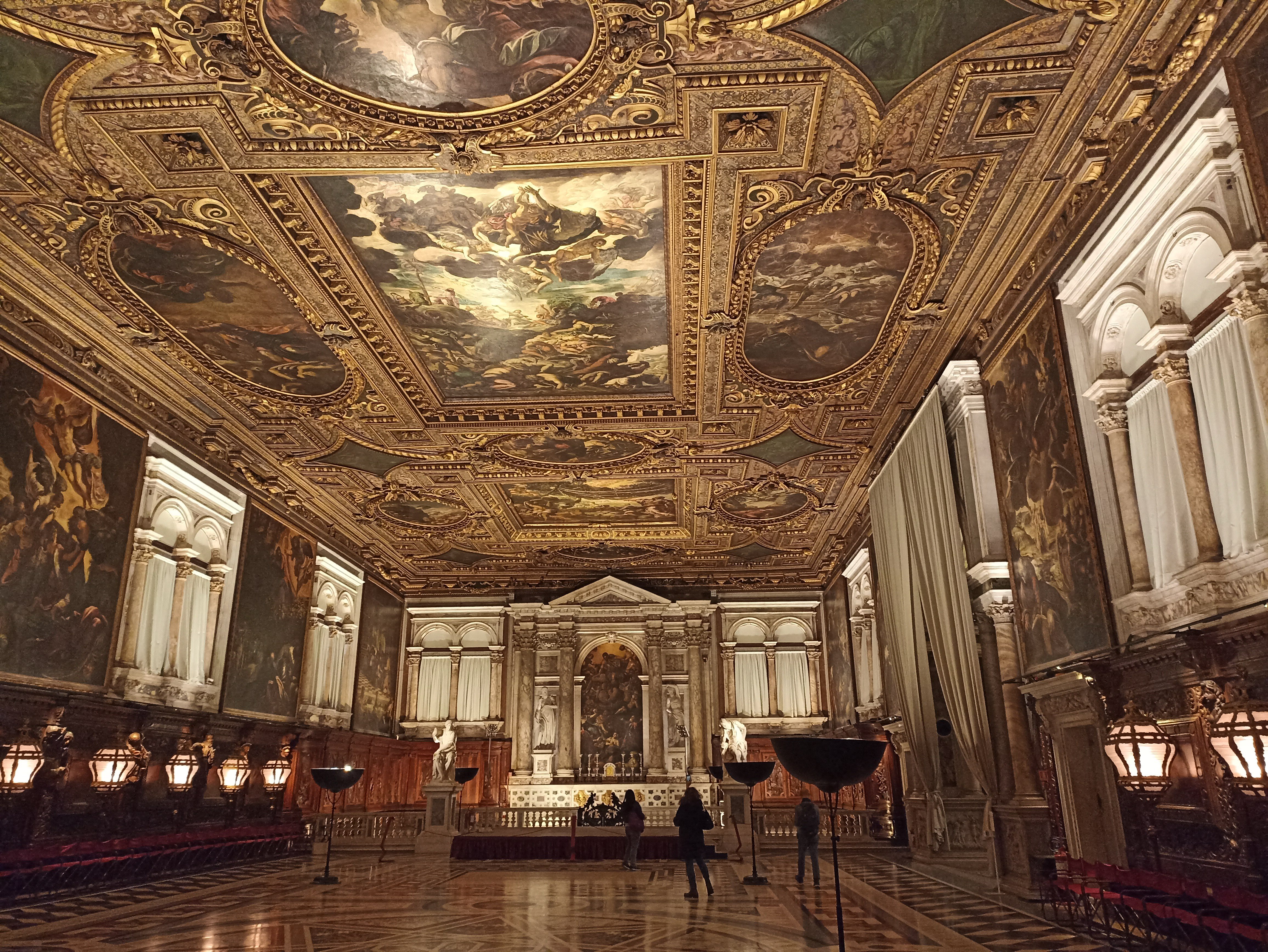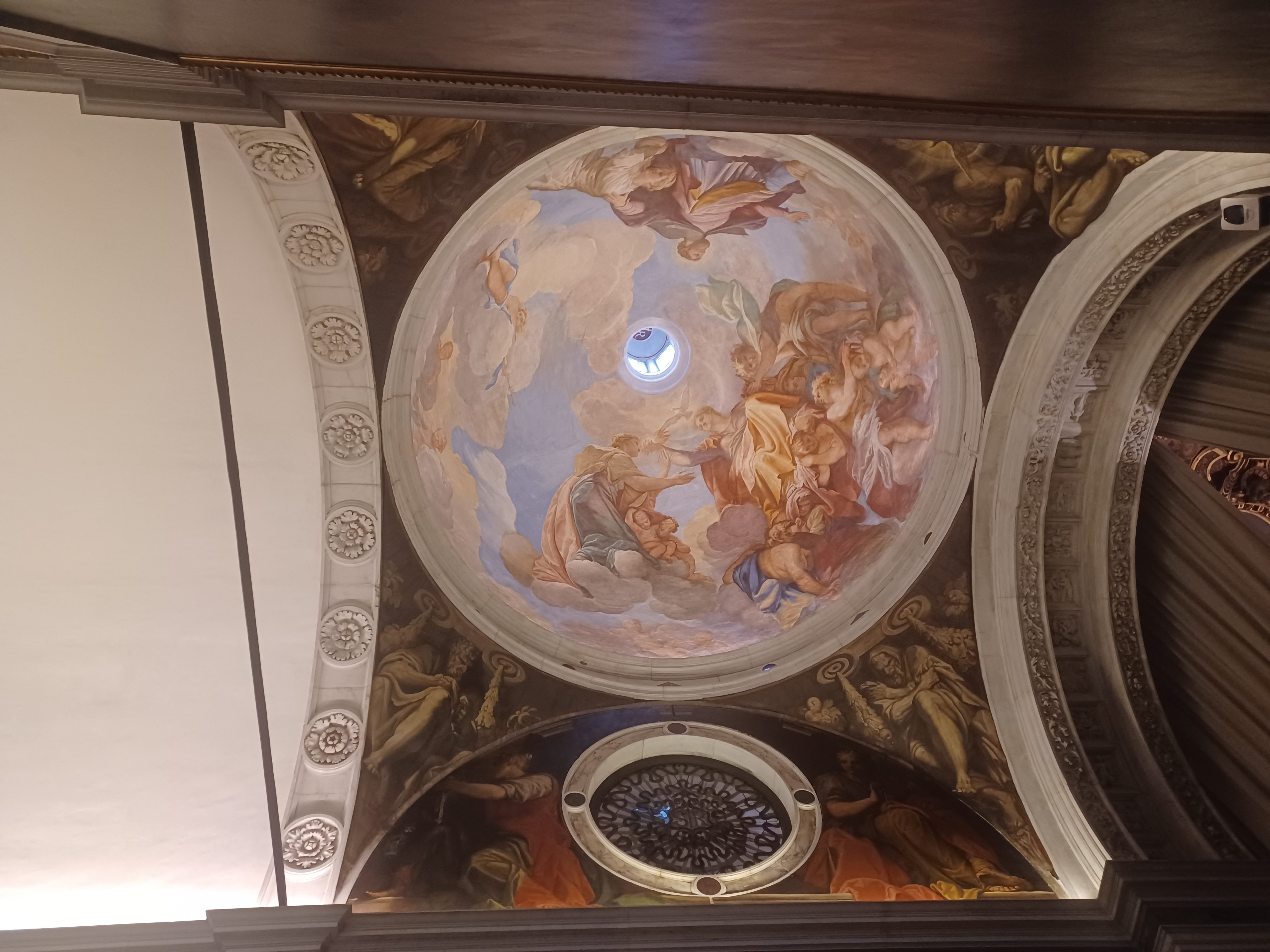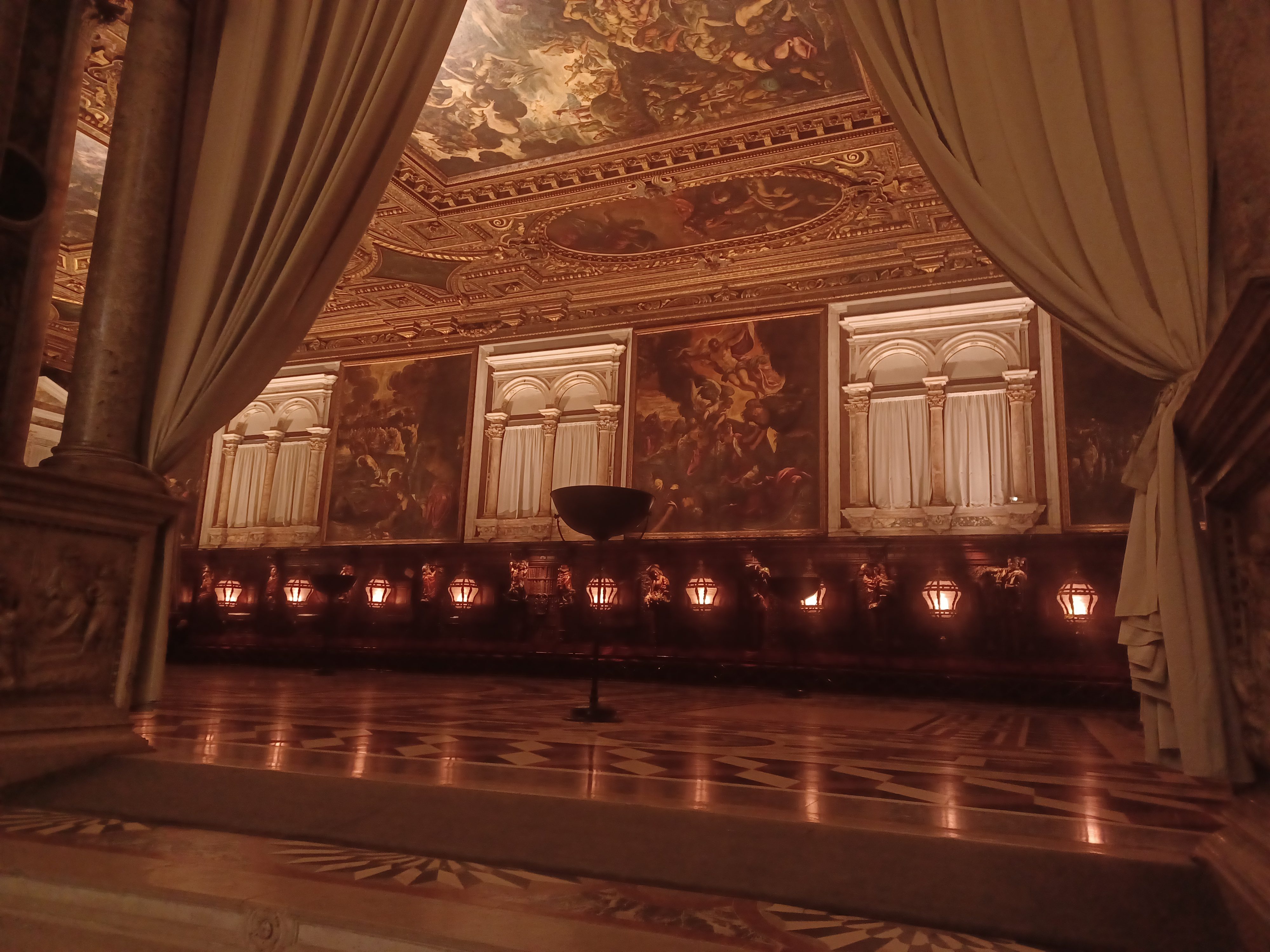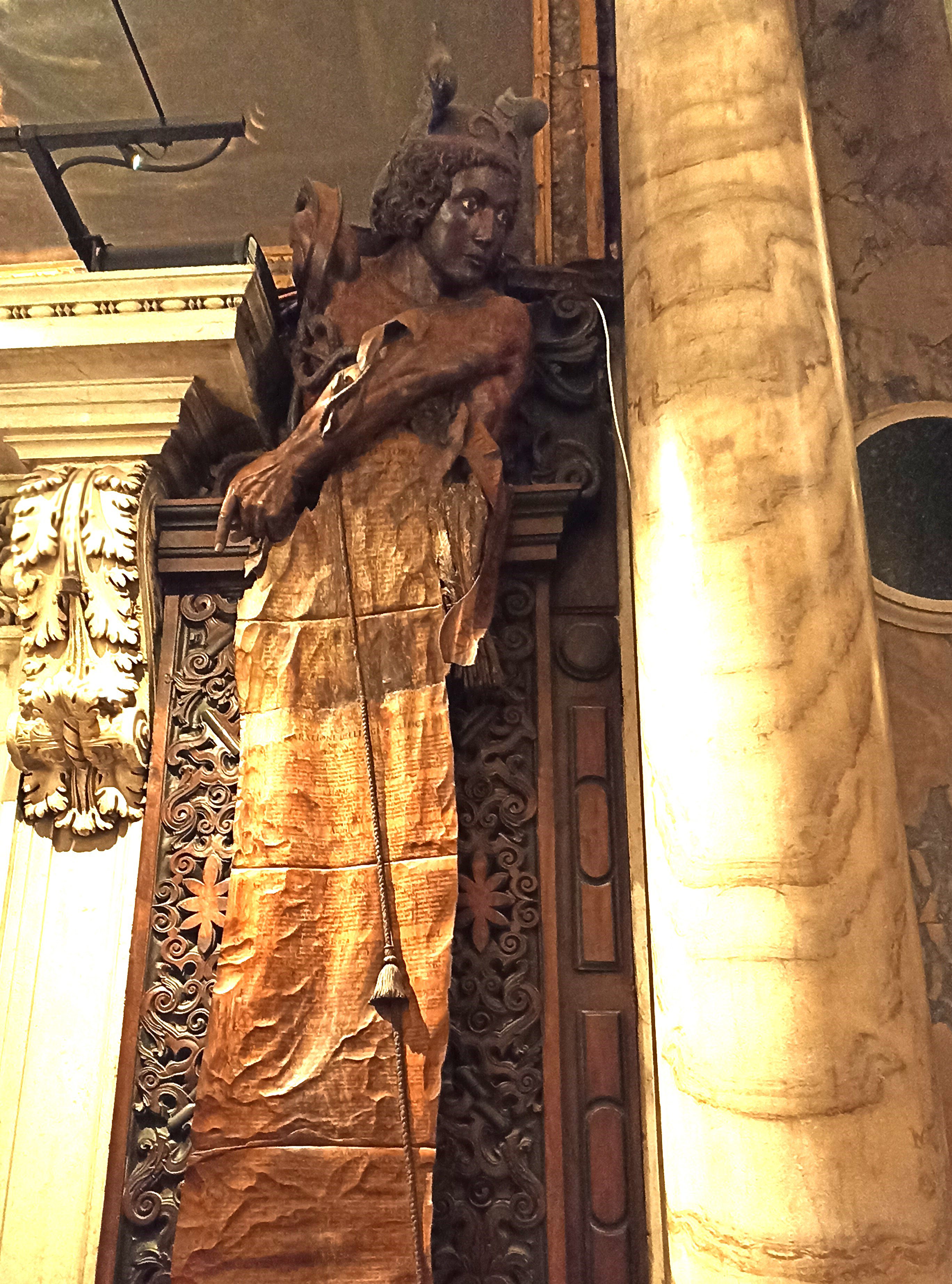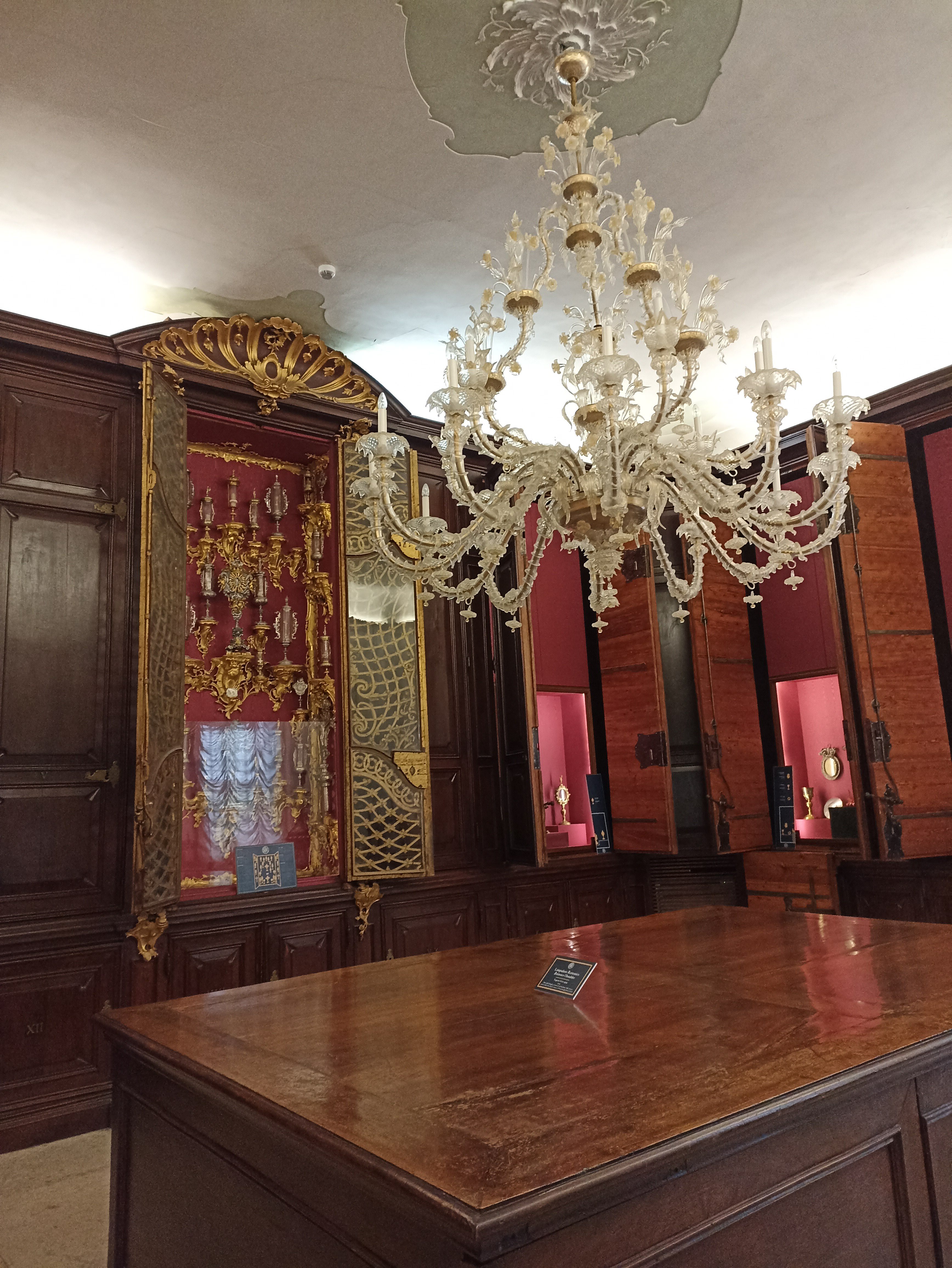I won’t call this a `hidden gem` however I don’t think it’s as well known as it should be. A visit to this scuola was on my husband’s list of places he still hadn’t visited in Venice after ten or eleven holidays there. Scuola Grande di San Rocco is located in the San Polo district of Venice;fit was founded in 1478 as a confraternity, set up by lay people who met for worship and mutual aid. San Rocco (Saint Roch) was the patron saint of plague victims so the confraternity grew rapidly in the period of plague epidemics and became very rich, enabling the scuola to fill the building with paintings and frescoes by some of the best artists around at the time. The association still exists and continues with its charitable work as well as looking after its artistic heritage. I won’t go into all the paintings and artists in great detail – the information is all available online – but will describe the visit from my point of view (that of someone interested in old buildings and art but who is not an expert on either and who doesn’t go into these subjects in great depth!). There is also a church attached to the scuola but we didn’t see inside it.
The facade of the building is impressive and tickets only cost us around 8 Euros each (concessionary rate): once you’ve paid it’s probably best to head straight to the Grand Staircase and start the tour there. We didn’t, and even though there were seven or eight paintings by Tintoretto in the vast ground floor hall I was slightly underwhelmed until we started climbing the grand staircase, which reminded me of the one at the Doges Palace, and we began to see paintings by Titian, Tintoretto and others whose names escape me but who are probably very famous. I took a photograph of a fresco by Giovanni Antonio Fumiani that decorates the inside of a cupula at the top of the Grand Staircase. Before that I remember a room with an amazing Tintoretto, an oval painting on a ceiling depicting San Rocco surrounded by angels.
We continued into the Sala Capitolare which is a huge, gloriously decorated room that has sixteen more Tintoretto oils on canvas. In 1575 Tintoretto offered to paint the large central canvas of the room, then when it was nearly complete he offered to produce all the paintings for the scuola and for the church there, committing to finish three large paintings every year In exchange for an annual salary, although he supplied and paid for the paint. This room is impressive in many ways, the floor, the lighting but mainly the series of carved panels of wooden statues by Francesco Pianta, a Venetian, who produced the work between 1657 and 1675; an intricately carved and beautiful work of art.
Just off the Sala Capitolare Tintoretto’s painting of The Crucifixion is currently undergoing restoration with help from Save Venice and as it is not currently available to see I sat to watch a film presentation of the process. I then found, through another opening off the Sala Capitolare, a corridor containing two more important paintings, one by Tiepolo, an artist I do know, and one by Giorgione. There was a staircase with a sign pointing up to `Sala del Tesoro’. I didn’t know what this meant but went back to tell my husband that there was more to see on an upper level. You will gather by now that we hadn’t bought a guide book on the way in! The top floor contained the Treasury, full of religious treasures including the reliquary of the finger of Saint Andrew and the reliquary of Saint Roch’s finger. By now I was feeling cold and rather tired: this was a budget holiday so we’d only bought a 24 hour vaporetto pass so on this day we’d walked all the way to La Fenice from our hotel then over Accademia Bridge, through Dorsodura to the Scuola Grande in San Polo and we still had to walk back again. I left my husband in the Treasury and went down to the gift shop to get warm and bought a couple of books of this amazing building which is definitely worth a visit.
